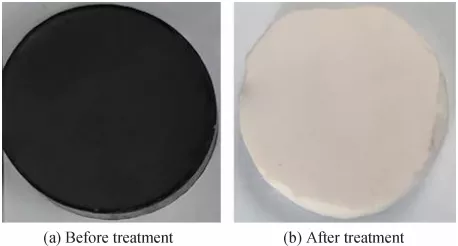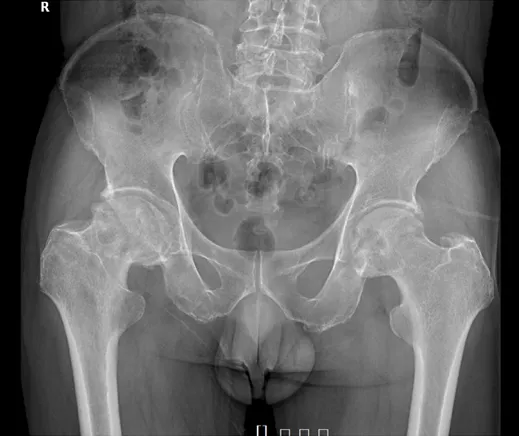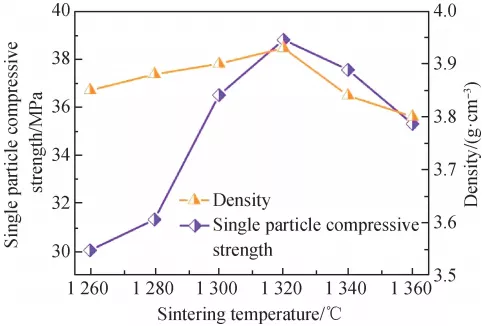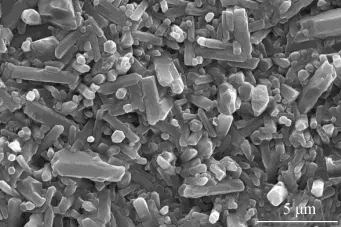Abstract: In this paper, the structure and performance effects of CaO content on CaO-B2O3-Al2O3-SiO2 (CBAS) glass/Al2O3 low temperature co-fired ceramic were mainly studied. The structure of glass and low temperature co-fired ceramic was characterized and analyzed by DSC, FTIR, XRD, SEM and other test methods. The research results show that when the CaO content is lower than 40% (mass fraction, the same bellow), the increase of free oxygen introduced by CaO destroys the glass network structure and reduces the glass viscosity. When the CaO content is greater than 40%, Ca2+ forms larger anion units with [SiO4] tetrahedra, which improves glass viscosity and glass transition temperature. The precipitation of CaSiO3 and Ca2SiO4 and the transition from CaSiO3 to Ca2SiO4 are facilitated by CaO. As the CaO content increases, the denseness of the ceramics increases first and then decreases, and the crystalline phase size gradually increases, which leads to an increase in the density, flexural strength and dielectric constant of the ceramic and then a decrease. When the CaO content is 40%, the sample achieves the best performance with the maximum density of 2.94 g/cm3, the flexural strength of 153.44 MPa, and the dielectric constant of 9.69.
Key words: high CaO content, CaO-B2O3-Al2O3-SiO2 glass, low temperature co-fired ceramic, crystal structure, sintering
Declaration: This article is provided by CERADIR™ users or obtained from Internet, the content does not represent the position of CERADIR™. We are not responsible for the authenticity/accuracy of the article, especially the effects of the products concerned. This article is for study only, it does not constitute any investment or application advice. For reprinting, please contact the original author. If it involves the copyright and/or other issues, please contact us and we will deal with it asap! CERADIR™ has the interpretation of this declaration.







